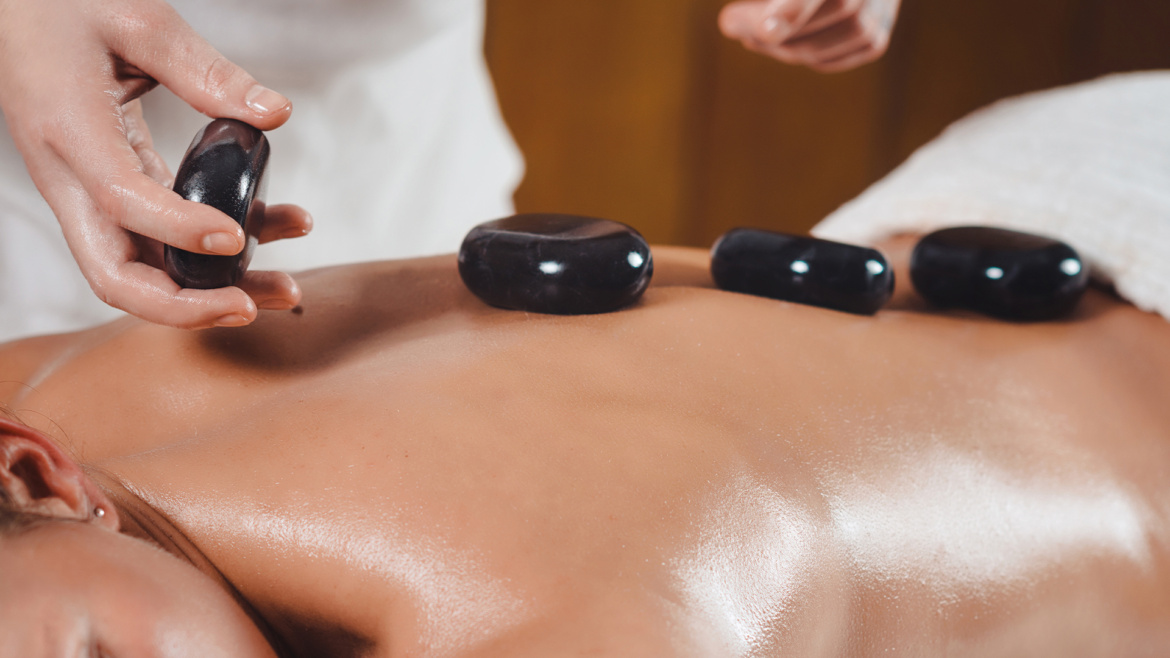Experience a Hot and Cold Stones Massage
Hot & Cold Stone Therapy treatment will leave you speechless
You should always tell your massage therapist if you feel pain during the massage. The therapist can adjust the technique or further prep the tissues if the superficial muscles are tense.
The heat from warm basalt stones penetrates deeply to help loosen and sooth tighten congested muscles. The cool marble stones are used to reduce inflammation; creating a balanced and rejuvenating treatment.
The stones are placed along your spine, under your neck, hands, on your face on your chakras, on your feet, between your toes and use to massage your whole body with them from head to toe using oil.
Upon the application of the hot stones, the temperature difference raises from 98.6 degree to 137 degree (the top recommended temperature). The total difference is approximately 38.4 degree (keep in mind that this temperature decreases rapidly as you massage with the stones).
With the application of cold stones, the temperature is lowered from 98.6 degree to 30 degree (the lowest recommended temperature). The total difference with cold stones is 68.6 degree. The body’s command center does not view this 40 degree difference with hot stones as too much of a treat, however, when we apply the cold stones; the body views that as a formidable challenge.
When the hot stones are applied, information is transmitted to the command center announcing that there is a change in the temperature of the periphery or surface of the skin. It is not a large change, per say, but enough that the blood vessels dilate to allow more blood flow into the area. This creates a slight reddening of the skin or hyperemia. A slight sedation takes place as the brain senses a nice warm relaxed state of being.
When the cold stones are applied, there is a very large difference in temperature. Momentarily, there is a constriction of the blood vessels. The constriction pushes blood and lymph out of the area. The more extreme the temperature is, the stronger the response. Extremes are viewed as a threat to survival. The brain sends out riders to gather all the blood from other areas like kidneys, lungs, heart, liver, etc. to “warm up” the area being threatened. The body views this situation as a threat causing a mass of blood to be rushed in very quickly. This purge of blood rushes through tissues and organs, warming and cleaning as it passes. Where there is fresh blood, there are fresh nutrients to promote nourishment and healing down to a cellular level. So short-term application of cold actually creates a “heating” effect. The body’s overall immune system functions more efficiently and is thereby strengthened. If the body is induced to respond to the challenge of maintaining homeostasis, it becomes stronger, having met the challenge and keeping the balance.


